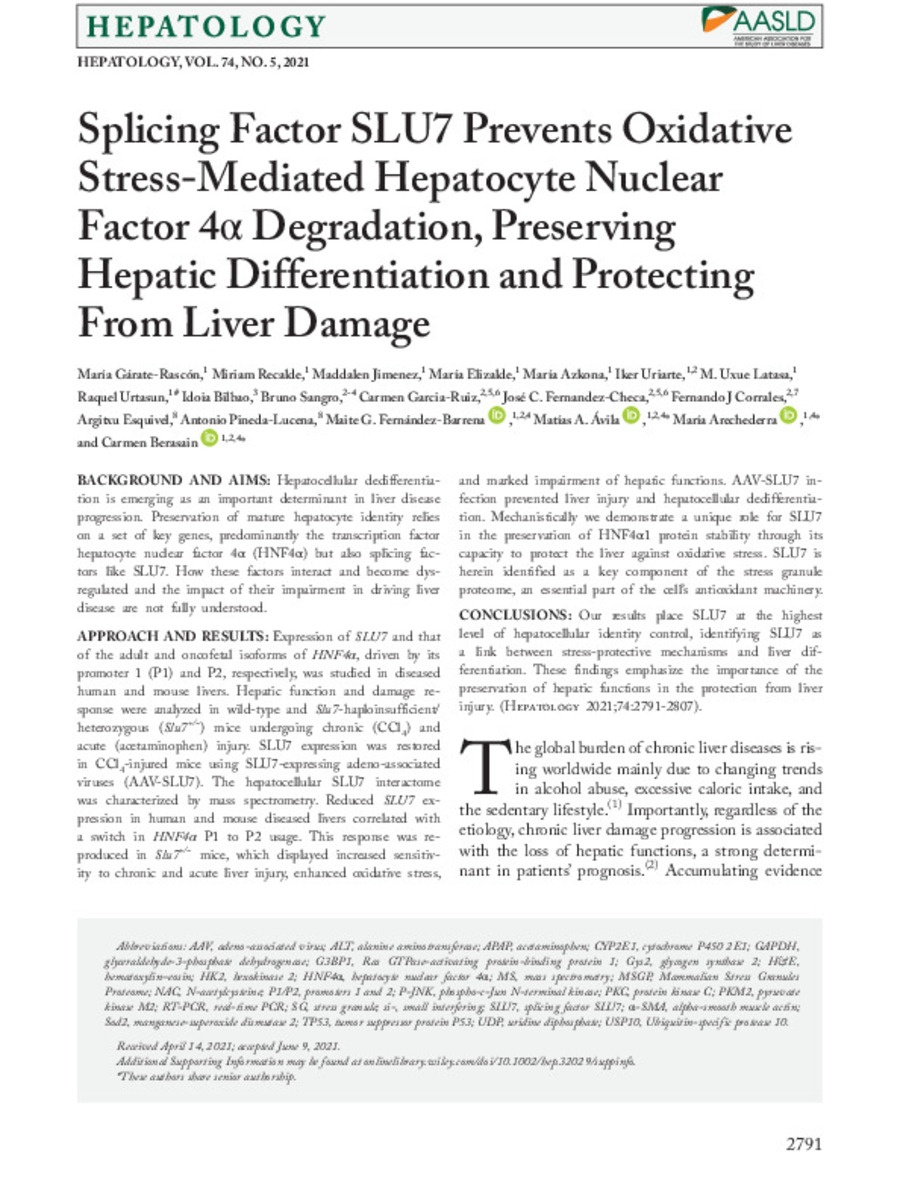Splicing factor SLU7 prevents oxidative stress-mediated hepatocyte nuclear factor 4α degradation, preserving hepatic differentiation and protecting from liver damage
Palabras clave :
Materias Investigacion::Ciencias de la Salud
SLU7
Degradation
Hepatocyte nuclear factor
Oxidative stress
Liver
Fecha de publicación :
2021
Nota:
This is an open access article under the terms of the Creat ive Commo ns Attri butio n- NonCommercial- NoDerivs License, which permits use and distribution in any medium, provided the original work is properly cited, the use is non- commercial and no modif ications or adaptations are made
Cita:
Gárate-Rascón, M. (María); Recalde, M. (Miriam); Jiménez-Andrés, M. (Maddalen); et al. "Splicing factor SLU7 prevents oxidative stress-mediated hepatocyte nuclear factor 4α degradation, preserving hepatic differentiation and protecting from liver damage". Hepatology. 74 (5), 2021, 2791 - 2807
Aparece en las colecciones:
Estadísticas e impacto
0 citas en

Los ítems de Dadun están protegidos por copyright, con todos los derechos reservados, a menos que se indique lo contrario.









